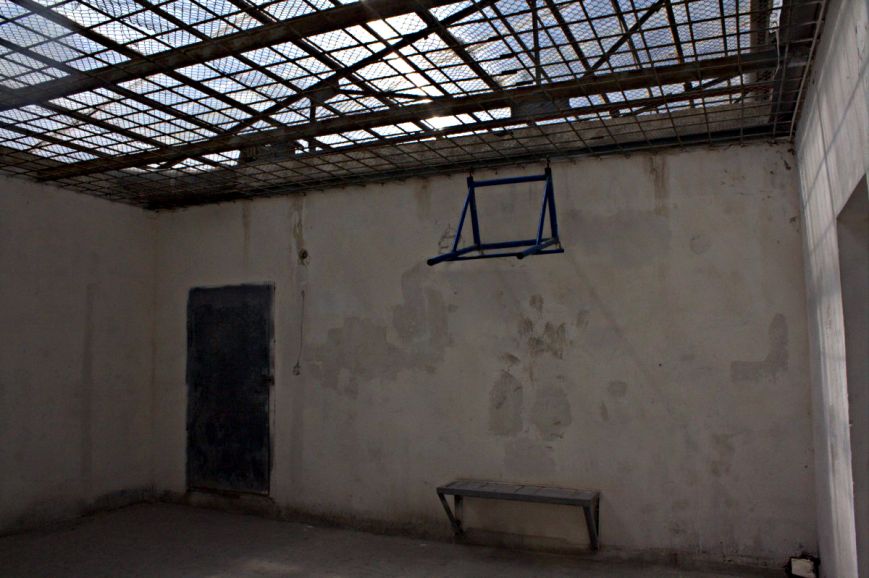In August 1804, Emperor Alexander I approved a decree establishing the new city on the Don, which today is known as Novocherkassk. According to the construction plan, which was developed by engineer lieutenant general Devolanov F.P., the new Cossack capital, in addition to public and military buildings, private houses and temples, should have a prison and a prison. Novocherkassk prison castle has been operating for over a hundred years. Nowadays, it is used as pre-trial detention center No. 3. More details about pre-trial detention center-3 in Novocherkassk are described in the article.
Acquaintance
PKU SIZO-3 in Novocherkassk is a federal state institution, namely pre-trial detention center No. 3. It is located in the department of the Main Directorate of the Federal Penitentiary Service (Federal Penitentiary Service) in the Rostov Region. SIZO-3 address: Novocherkassk, Ukrainskaya Street 1. The isolation ward is managed under the supervision of Colonel A. Yu.
A bit of history
In the city of Novocherkassk SIZO-3 has been operating since July 1916. Despite the outbreak of World War I, the Main Military Directorate in 1914 granted permission to build a regional prison castle. For the construction of buildings, the Troops government hired workers for 60 rubles a month. Due to the fact that during the wartime from the west of Russia there was an intensive evacuation of both educational institutions, institutions and organizations, as well as people, the prison central was decided to settle with refugees. In 1916, the first batch of prisoners was delivered to the castle. In 1917, the sewer was brought to the prison, which at that time was considered a luxury. A little later, the castle was electrified. Initially, in Novocherkassk SIZO-3 (photos of this penitentiary institution are presented in the article) was designed as a central prison castle, and not as an isolator. The prison complex consisted of a main building for prisoners, several buildings that housed warders, baths, laundry and other facilities. According to historians, in the castle at the same time could contain up to 600 sitters.
Nowadays
Today SIZO-3 in Novocherkassk is not much like a pre-revolutionary prison castle . According to experts, the prison was repeatedly changed, buildings were reconstructed, and new buildings were added. If earlier the castle had two buildings, then in the postwar period there were more of them. In 2005, the isolation ward was supplemented with a new building No. 6. This institution was considered a prison center until 2003. Since that time, he was reprofiled as a pre-trial detention center, within the walls of which 500 people are being held.
Reception days
Those who wish to personally communicate with the administration of the detention center should familiarize themselves with the management team and their work schedule. You can meet with the senior consultant, deputy chief of the regime, major of internal service Bogmoy A.N. on Monday. It takes from 13:00 to 15:00. You can also come to him on Thursday. However, on this day, reception is only until 12:00. To the head of the medical unit, major int. A. Ternova’s service should come on Tuesday, she receives visitors from 10:00 to 12:00. At the same time, the head of the Operations Department, Kovalev I.N., took the rank of captain ext. service. On Wednesdays from 10:00 to 12:00, the deputy head of the pre-trial detention center, Vasilenko A. Yu., And the head of the special report department, Lyubovina N. A., work with citizens on Thursday. Head of the Detention Unit Colonel Ext. service Kolganova A. Yu. and the head of the security department of major ext. Morgun V.A. services Both receive citizens from 13:00 to 15:00.

Date Schedule
If someone wants to visit a sitter, then this can be done any day. The rooms for short visits work seven days a week from 8:00 to 17:00. However, eyewitnesses advise arriving at the detention center earlier in order to queue up and arrange formalities. Those who wish to see the prisoner will be given in SIZO-3 Novocherkassk samples of applications, according to which they should write a request for a meeting in the name of the head of the detention center.
It is noteworthy that lengthy dates are provided only for sitters from the household service detachment (on Mondays and Thursdays).
When do you receive packages?
If anyone wants to support the sitter out of their will, they can do it any day, since the transmission rooms work seven days a week. The exception is January 1 and the first Wednesday of the month (this day is sanitary). To send a parcel to a prisoner, you must first write a statement. The document is accepted from 8:00 to 17:00. If anyone does not know how to compile it, a sample transfer application will be issued in the detention center. In Novocherkassk in SIZO-3 parcels from the will are accepted until 19:00.
Which of the "celebrities" was sitting in isolator No. 3
For some time, the Novocherkassk pre-trial detention center was heard. Korolev S.P., one of the creators of space technology, and also the chief of the general staff, General Walter von Seidlitz, served a prison term here. During the years of the Soviet Union, the isolator became the second home for the famous maniac Andrei Chikatilo, who has 53 human lives on his conscience.
Gangster Sergey Maduev, who is known in criminal circles as Chervonets, also visited the pre-trial detention center No. 3. In addition to the necrophilic sadist and the "professional" criminal, the isolation center in Novocherkassk became famous thanks to the scandalous Ukrainian Nadezhda Savchenko.
Finally
In the entire history of the existence of this penitentiary institution, they tried to escape from it only once. This happened in 1917. A group of several sitters decided to jump over the fence from the adjacent building of the bathhouse. However, this venture was not crowned with success. Judging by the estimates of the expert commission, even then the conditions of detention in the detention center corresponded to the best Western standards.